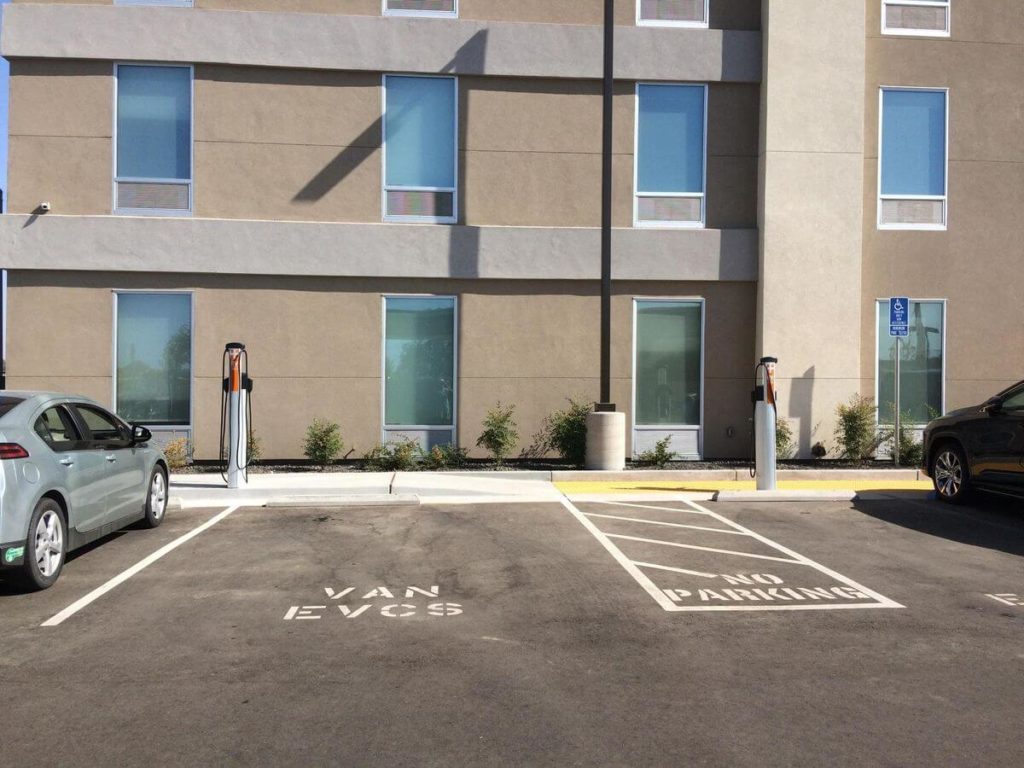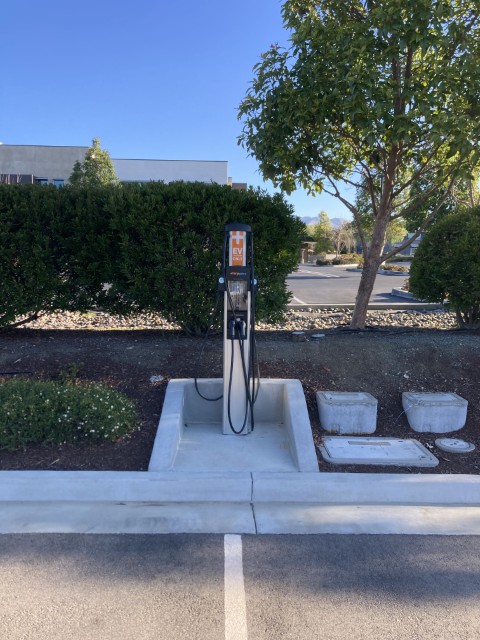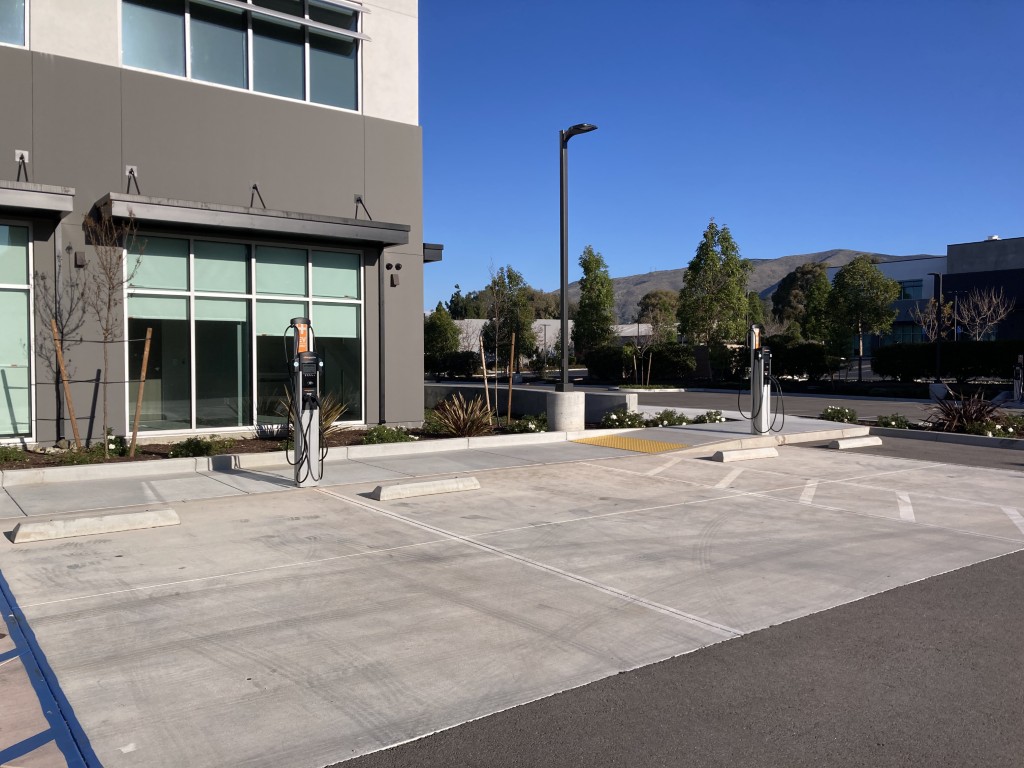What Are the New California EV Charging Requirements in the 2025 Building Code?
According to the State of California, a record 29.1% of new vehicles sold in Q3 of 2025 were all-electric (BEVs). Essentially, one in every third passenger vehicle sold in the last quarter in California was fully electric. This is a historic moment as California continues to make progress on its plans to 100% electric car sales by 2035. With 10 years to go, the State is well on its way to reach its ambitious goal. That being said, the need for EV charging infrastructure is great to support all of these EVs on the road.
To assist with this, effective January 1, 2026, the 2025 California Building Standards Code (Title 24) brings major updates to electric-vehicle (EV) charging requirements for new construction and major renovations. These changes, found mainly in the Green Building Standard (known as CALGreen) (Part 11) and cross-referenced in CBC (Part 2) and Energy Code (Part 6), greatly expand EV-ready infrastructure across multifamily, hotel, and nonresidential projects.
If you design, build, or own property in California, understanding these new EV rules will be critical for code compliance, utility sizing, and cost control.
High-Level Overview Table for New California EV Charging Requirements in 2025 Building Code
| Occupancy Type | Requirement Summary | Key Code Section |
| Single-family | 1 EV-ready (low-power Level 2) receptacle per dwelling unit with parking. | § 4.106.4.1 |
| Multifamily (assigned parking) | 100% of assigned spaces: low-power Level 2 receptacle (EV-Ready). | § 4.106.4.2.1 (1) |
| Multifamily (unassigned/common) | ≥ 1 receptacle per unit; + 25% of extra common spaces with installed Level 2 EVSE. | § 4.106.4.2.1 (2) |
| Hotels / Motels | 40% receptacles + 25% installed EVSE (min. 65% total EV-supporting spaces). Tier 2: 100%. | § 5.106.5.3 |
| Non-residential (office/retail) | Increased % of installed EVCS; stricter load sizing rules & connector standards. | § 5.106.5.3.1 – .3 |
| Additions / Alterations | Each added/altered space requires an EV receptacle or Level 2 charger. | § 4.106.4.3 |
| Electrical Sizing / ALMS | ALMS allowed if each space can deliver ≥ 3.3 kW simultaneously. | § 4.106.4.2.2 |
Residential: Single-Family and Multifamily
Key Update Highlights
- 100% EV coverage for assigned parking — every assigned stall at a multifamily dwelling must include a low-power Level 2 (208/240 V) receptacle.
- Common/unassigned spaces — at least one receptacle per dwelling unit, plus 25% of extra common spaces must have installed Level 2 EV chargers accessible to all.
- Receptacle types standardized — NEMA 14-50, 6-30, or 6-50 outlets (per § 4.106.4.2.2).
- Load management flexibility — automatic load-management systems (ALMS) allowed if each space maintains ≥ 3.3 kW capacity.
- Exceptions for mechanical lifts or infeasible sites remain (§ 4.106.4.2.1 Exception 1–2).
These changes effectively make 100% of new multifamily units EV-ready, a major leap from the 2022 code that required only 40%. Additionally, a requirement for Level 2 chargers still remains for certain sites.

Hotels & Motels
Updated Percentages
- Minimum requirement: 40% of spaces with low-power Level 2 receptacles + 25% with installed Level 2 EVSE (= 65% total EV-supporting spaces).
- Voluntary Tier 2: 60% receptacles + 40% installed EVSE (= 100% coverage).
- Applies to all guest and employee parking.
Hotels should plan for larger electrical service panels and conduit infrastructure to support for future EV demand. Hotels are a great choice for EV chargers since they offer drivers a convenient way to charge overnight. EV charging at hotels is quickly becoming a new standard amenity like breakfast and Wi-Fi.
Non-Residential & Commercial
What’s New
- Higher installed EVCS minimums: percentage of installed chargers (versus EV-capable only) is significantly increased. See the below table for more information.
- Connector standards added: required receptacle configurations (208/240 V) for 20A, 30A, and 50A circuits.
- Electrical load sizing: new rules reduce the portion of service reserved only for “future EV” capacity, ensuring more power is available to installed EVSE now.
- Accessibility requirements under CBC § 11B-812 still apply
TABLE 5.106.5.3.1 — EV CAPABLE SPACES AND EVCS
| Total Number of Actual Parking Spaces | Number of Required EV Capable Spaces | Other Than Office and Retail — Number of Required EVCS | Office and Retail — Number of Required EVCS |
| 1–9 | 0 | 0 | 0 |
| 10–25 | 4 | 2 | 3 |
| 26–50 | 8 | 4 | 6 |
| 51–75 | 13 | 6 | 8 |
| 76–100 | 17 | 8 | 13 |
| 101–150 | 25 | 12 | 19 |
| 151–200 | 35 | 18 | 26 |
| 201 and over | 20% of actual parking spaces | 50% of EV capable spaces | 75% of EV capable spaces |
These updates continue to make EV infrastructure a baseline building amenity, not an optional upgrade. Additionally, as shown in the table above, there is a new column for office and retails projects. For example, large retail project with 200 parking spaces under the 2022 California Green Standards Code were required to provide 9 EV chargers. With the 2025 Code, that number increases to 26. Altogether, these updates increase the number of EV capable and EV chargers are installed at new developments.

Additions & Alterations
Projects adding or modifying parking spaces under a building permit must equip each new or altered stall with:
- A low-power Level 2 receptacle, or
- An installed Level 2 EV charger.
Minor exceptions exist for Level 1 (120 V) outlets in limited cases.
This ensures incremental retrofits contribute to statewide EV readiness.
Local Reach Codes
It is important to note that cities and counties may adopt reach codes exceeding state minimums. Many jurisdictions, such as the City of San Luis Obispo, already mandate 100% EVSE-installed parking or higher power levels. As a result, it is recommended to always verify local amendments before design.
Summary
The 2025 California Building Code and CALGreen Code (Title 24 Parts 2 and 11) mark the most significant expansion of EV charging infrastructure requirements to date. By moving from “EV-capable” wiring to full EV-ready and installed Level 2 chargers, the state aims to future-proof new developments for the accelerating shift to electric vehicles.
Starting January 1, 2026, all new residential, hotel, and commercial projects in California must be prepared for an electric mobility future. While exceptions still exist, the amount of EV charging infrastructure at new developments will significantly increase with the latest California Building Code.
Should you have any questions about the new California EV charging requirements in the 2025 Building Code, please feel free to reach out to us at Charged Future. As a turnkey EV charging consultant, we help businesses of all kinds plan and install their EV charging projects.

Hi there! I’m the founder and project manager at Charged Future: the EV charging consultancy. Charged Future helps businesses achieve their EV charging goals. Specifically, I serve as the project manager for your EV charging project, which can save you both time and money! Additionally, I can search and apply to all eligible rebate applications, which can typically cover a large portion of the project cost.


